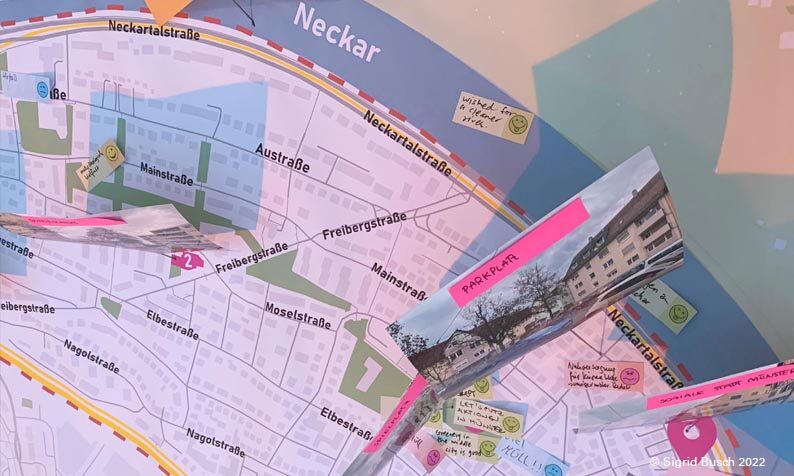
This Design Studio is offered in cooperation with ILPÖ
Integrated Research and Design Project II – Planning habitats for people and nature
The integrated project aims to address the challenge of integrating broader ecological, environmental concerns with concerns for socially inclusive urban development. Furthermore, it acknowledges that Stuttgart is a polycentric city where most of the population lives outside of the dense inner-city districts. Stuttgart Münster is an ideal site for this endeavor.
The studio builds on the experience of the Social Inclusive Cities Programme (Programm Soziale Stadt) in Stuttgart Münster and the exploration of the relevance of Sustainable Development Goals (SDGs) for the neighbourhood level. One key aspect is that social concerns are dealt in silo and separately from other concerns such as for the environment, and ecosystems. An overall gap in the area is the missing social accessibility of greenspaces, the nearby Neckar as well as a lack of qualitative public space for social interaction on a neighborhood level. The physical separation between Münster and its adjacent neighbourhoods leads to the fact that its existing qualities are often overseen. The integrated development concept (IEK) for Münster recently broadened its boundaries. This opens a window of opportunity for activating public spaces for the people in Münster. Potential catalysts to activate the neighborhood could be the reactivation of the old railway station, an integrated approach for the Neckar banks or spaces related to the energy transition.
In cooperation with the city of Stuttgart and under guidance of an interdisciplinary teaching team (urban ecology, urban planning) we will analyse and address existing blue-green infrastructures (e.g., Neckar banks, vineyards, travertine park, green corridor) with regard to their A) ecological significance and B) social significance. Based on participatory needs analyses, we will develop visions and concepts with the aim of securing and developing the qualities and accessibility of these elements and the Münster district in the long term. Furthermore, we will broaden the perspective of Münster as part of Stuttgart’s diverse urban landscape and make its manifold potentials and qualities visible.


